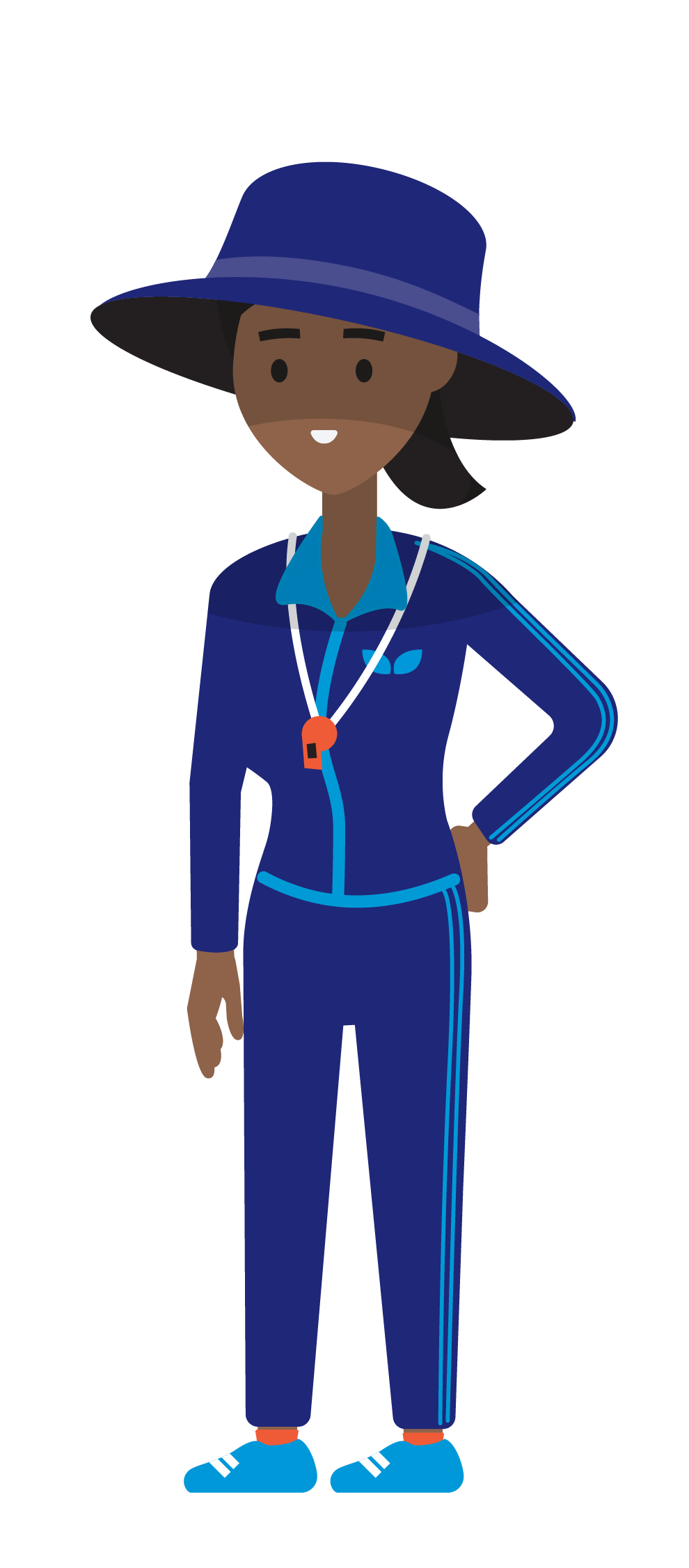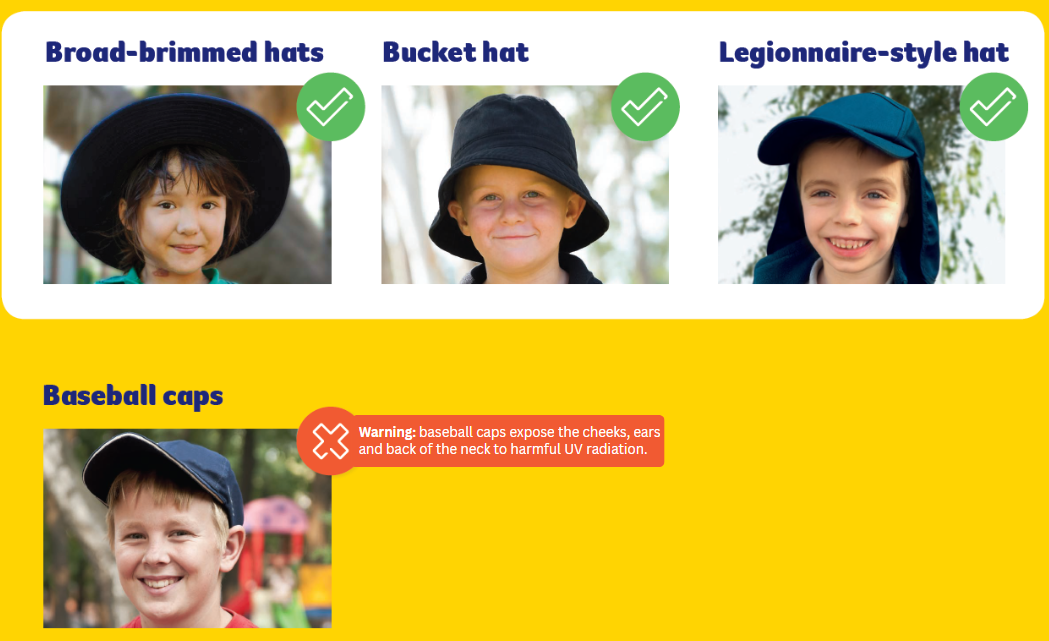

Use the free SunSmart Global UV app to check your local sun protection times.
Incorporating ample shade is essential for creating safe, welcoming and healthy educational environments and communities. Besides offering sun protection, shade provides numerous additional benefits for the health, safety and wellbeing of both children and educators. It can also help with biodiversity in your local area.
Need more shade at your school or service?
Our Shade Advocacy toolkit offers steps to help you advocate for and implement shade.

SunSmart clothing includes:
Key Tips:
Remember to use sunscreen along with other sun protection measures like staying in the shade, wearing protective clothing, a broad-brimmed hat, and sunglasses.
As part of WH&S UV risk controls and role modelling, staff, families, and visitors demonstrate SunSmart behaviours when outside, inspiring children to be SunSmart.
This means:
Key Tip:

We're excited to have you here. Take a look around and explore the updates.
We're still making a few tweaks to make sure everything works perfectly for you.
Your feedback matters to us. If there's anything we've missed or could improve, please let us know.